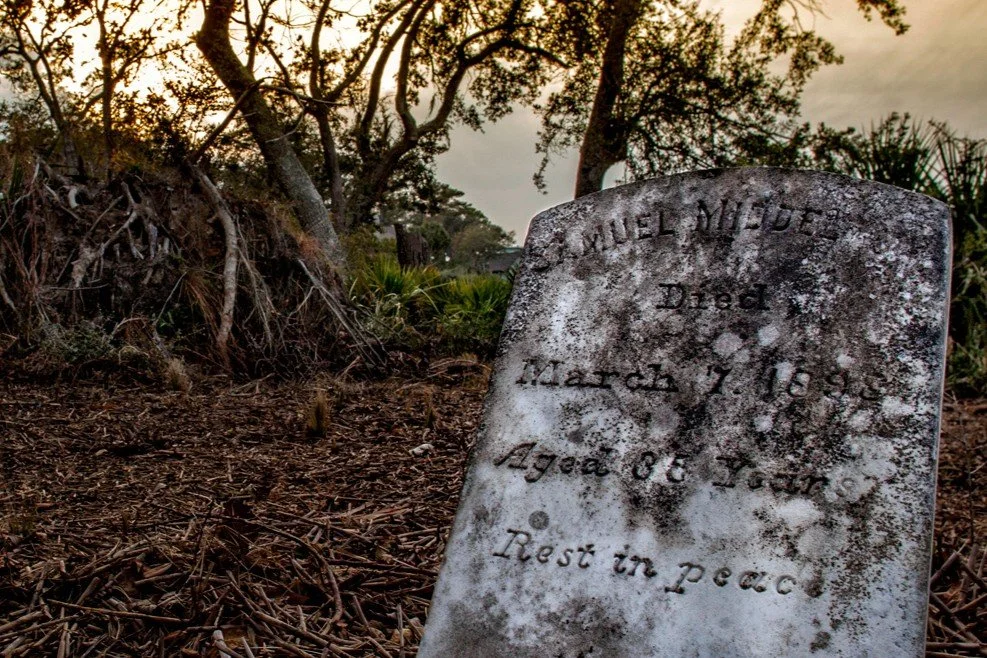Historic Cemeteries
Hilton Head Island is home to several historic African American cemeteries that serve as enduring testaments to the Gullah Geechee people's resilience, spirituality, and cultural heritage. These sacred sites, some dating back to the 18th century, reflect burial traditions rooted in West African customs and have withstood the challenges of time and development.
Among the historic African American cemeteries on Hilton Head Island, Amelia Cemetery contributes to the tapestry of Gullah heritage.
Located in Sea Pines, this cemetery dates back to the Civil War era and was originally a Gullah burial ground. It features unique burial customs, including the placement of personal items on graves, reflecting West African traditions.
Situated near Shelter Cove Plaza, this cemetery is a reminder of the island's plantation history and the African American communities that lived and worked there. It includes graves of individuals who were part of the Gullah community.
Located on the Hilton Head Plantation, this cemetery dates back to the Civil War era and was originally a Gullah burial ground. It features unique burial customs, including the placement of personal items on graves, reflecting West African traditions.
Among the historic African American cemeteries on Hilton Head Island, Amelia Cemetery contributes to the tapestry of Gullah heritage.
Once part of the Lawton Plantation, this cemetery includes the grave of Thomas Frazier, a member of the 21st U.S. Colored Infantry during the Civil War. It serves as a testament to the African American military service during that period.
Also known as Otter Hole Cemetery, it is part of the network of Gullah cemeteries and reflects the enduring legacy of African American families on the island.
Located beside Shelter Cove Shopping Center, this cemetery is among the nine historic Gullah cemeteries on the island. It reflects the enduring legacy of African American families in the area.
This 19th- and 20th-century African American cemetery, located on the outskirts of the island, overlooks Calibogue Sound and is maintained by family members. It reflects the Gullah community's presence and history in the area.
Established in the early 1800s, Talbird Cemetery is one of Hilton Head's largest African American burial grounds, associated with Mt. Calvary Missionary Baptist Church. It reflects the deep-rooted Gullah Geechee heritage and traditions.
Originally known as the Government Cemetery, Union Cemetery served as the burial ground for soldiers who died during the Civil War on Hilton Head Island. Their graves were subsequently moved to the National Cemetery in Beaufort.
Zion Chapel of Ease Cemetery, dating back to 1767, includes the Baynard Mausoleum, believed to be the oldest surviving structure on Hilton Head Island. It reflects the island's colonial and antebellum history.
CULTURAL SIGNIFICANCE & PRESERVATION EFFORTS
These cemeteries are more than resting places; they are sacred spaces that embody the Gullah Geechee people's spiritual beliefs and cultural practices. Traditions such as placing personal items on graves and maintaining clean, vegetation-free burial sites reflect a deep connection to ancestral customs. Preservation of these cemeteries has become increasingly important due to threats from development and natural disasters. Community groups, including the Native Island Business and Community Affairs Association (NIBCAA), have initiated efforts to maintain and protect these historic sites, ensuring that the legacies of those interred are honored and remembered. Visiting these cemeteries offers a profound opportunity to connect with the rich history and enduring spirit of the Gullah Geechee community on Hilton Head Island.









